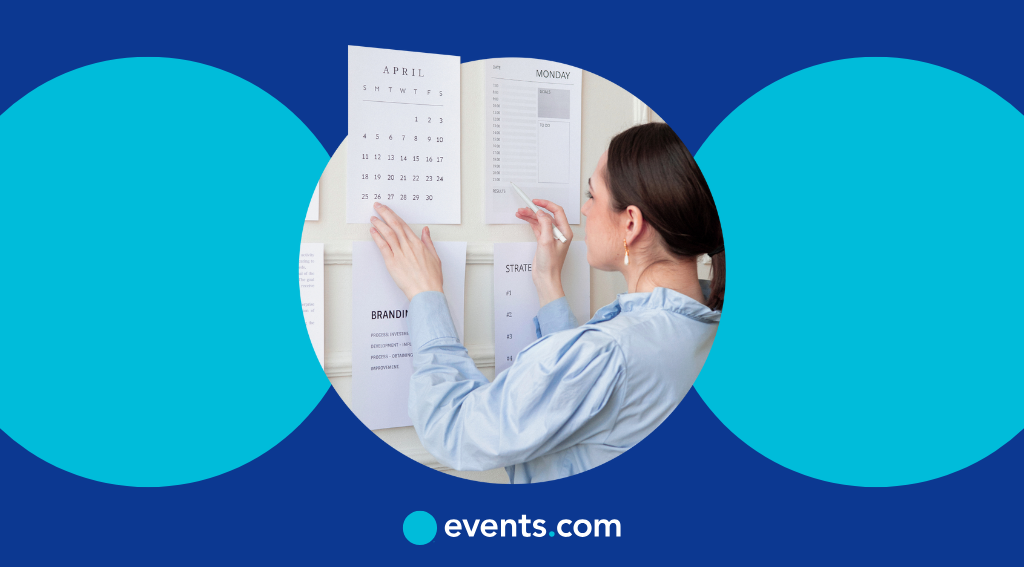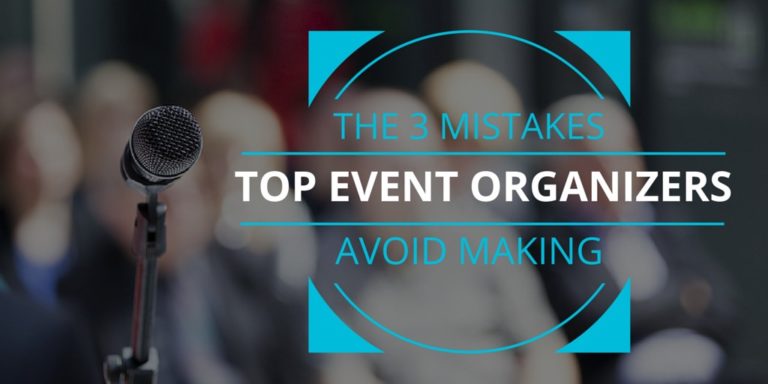Ever been backstage when chaos breaks out because someone missed their cue? Or when the speaker’s mic isn’t working and no one knows who’s supposed to fix it? That’s exactly when a solid Run of Show can save the day. A Run of Show is a detailed document that maps out your event, minute by minute, from setup to wrap-up.
It’s more than just an agenda. While an agenda gives the big picture, a Run of Show dives into every behind-the-scenes detail that keeps your team in sync and your event running smoothly. In this guide, we’ll cover what a Run of Show includes, how to build one, and share a free checklist to help you stay on track.
What is a Run of Show?
A Run of Show is more than an agenda, it’s your event’s play-by-play guide. It lays out who’s doing what and when, covering everything from the moment doors open to the final vendor load-out.
As an event organizer, you’re managing moving parts: speakers, tech crews, volunteers, catering, and the list doesn‚Äôt stop there. A Run of Show helps keep everyone on the same page. It answers key questions like: Who‚Äôs doing what? Where should they be? And when does it all need to happen?
For example, at a conference, your Run of Show might include when the keynote speaker takes the stage, when A/V checks are scheduled, who‚Äôs managing registration, and what time lunch is served. It helps both the front-of-house and behind-the-scenes teams move together‚ÄĒeven when plans shift. Usually, there‚Äôs a dedicated point person (often the stage manager or event producer) who updates the Run of Show in real time to reflect any last-minute changes. This document is essential for avoiding missed cues, keeping things running smoothly, and ensuring nothing falls through the cracks.
Run of Show vs. Agenda vs. Schedule
Still unsure how a Run of Show differs from an event agenda or schedule? Here’s a quick breakdown:
| Document | Purpose | Audience | Level of Detail |
| Agenda | Gives a high-level overview of the event | Attendees | Basic ‚Äď focuses on key segments and timing |
| Schedule | Outlines exact timing for event activities | Staff, vendors | Moderate ‚Äď includes timing and locations |
| Run of Show | Maps out every minute and task | Event organizers, crew | Detailed ‚Äď includes roles, cues, tech notes |
Why you need a Run of Show
Being an event organizer takes serious coordination, and a Run of Show brings structure to the moving parts. Here’s how it makes a difference:
Avoiding production pitfalls
Without a clear Run of Show, it’s easy for things to slip through the cracks. A speaker misses their cue. The mic isn’t ready. The lights come up too early. A detailed Run of Show helps prevent these hiccups by giving everyone, from the AV crew to volunteers, a clear game plan.
Improving team coordination
Your team includes speakers, tech staff, caterers, moderators, sponsors, and they all need to move in sync. A Run of Show lays out who’s responsible for what and when. It reduces last-minute questions and keeps everyone a step ahead.
Enhancing the attendee experience
When your team is aligned behind the scenes, it shows. Sessions start on time, transitions are smooth, and there’s no awkward downtime. A well-run event creates a better experience for attendees, and that means stronger reviews, referrals, and turnout next time.
How to create a Run of Show
A well-built Run of Show keeps your entire event ecosystem aligned, from speakers and sponsors to stagehands and streaming crews. Whether you’re starting from scratch or using smart tools to speed things up, here’s how to build a Run of Show that keeps everything (and everyone) on track.
- Gather event details
Start with the essentials: event name, date, location (or virtual platform), and your main segments. Confirm speaker/presenter details, sponsor content, and any known tech requirements (AV needs, livestream platforms, slide decks, etc.).
- Choose a template or tool
You’ve got options. Traditional tools like Excel or Google Sheets are great if you’re familiar with formatting. But if you want to save time and avoid blank-sheet syndrome, the Events.com AI Run of Show Generator is a fast, flexible solution.
Just enter your key event details, type, duration, number of sessions, and the generator builds a complete Run of Show and matching event agenda, including:
- Suggested timing blocks
- Role and task assignments
You can fully customize it to match your team, format, and flow.
- Map out the timeline
Start with major blocks: registration, welcome remarks, sessions, meals, and wrap-up. Then drill down into minute-by-minute breakdowns. Include start/end times, buffer periods, and transitions to keep everything realistic and smooth.
- Assign roles & responsibilities
Every task needs an owner. Match each item to a team member, vendor, or volunteer. Confirm who’s available when, and make sure backup contacts are in place for high-impact moments.
- Integrate tech & design cues
Add technical instructions where needed:
- Mic checks
- Lighting transitions
- Slide deck triggers
- Streaming platform actions
- Review and rehearse
Once your draft is ready, share it with your core team. Walk through the full timeline and catch any gaps, overlaps, or confusion. A quick dry run now can prevent chaos later.
- Finalize and distribute
When it’s ready, lock the document. Share it through your team’s preferred channels, email, Slack, shared folders, and schedule automated reminders if your tool supports them.
Run of Show checklist
Here’s a quick rundown to make sure you stay ahead.
Prep & planning
‚ėź Confirm event name, date, and location or platform
‚ėź Outline core event segments (keynotes, panels, breaks, etc.)
‚ėź Finalize speaker/presenter list
‚ėź Gather known technical requirements (AV, livestream, slide decks)
Choose your format
‚ėź Select how you‚Äôll build your Run of Show:
- Spreadsheet (Excel, Google Sheets)
- Event planning software
- Or use the Events.com AI Generator for an instant, editable draft
The Events.com tool can auto-generate a complete Run of Show and matching agenda based on your inputs – a solid shortcut when time is tight.
Build and refine the timeline
‚ėź Block out major segments (registration, sessions, meals, etc.)
‚ėź Break into minute-by-minute entries with start and end times
‚ėź Add transitions, intro/outro cues, and buffer time
Assign roles and responsibilities
‚ėź Match each task to a team member, vendor, or volunteer
‚ėź Confirm availability and contact details
‚ėź Note backup personnel for key moments
Add tech and platform cues
‚ėź Include audio/visual needs, mic and lighting cues, slide triggers
‚ėź Add livestream details, platform actions, and on-screen prompts
‚ėź Flag custom elements like music drops or breakout room changes
Review and rehearse
‚ėź Share your draft with the core team for review
‚ėź Walk through the timeline step-by-step
‚ėź Adjust any timing gaps, handoffs, or unclear ownership
Finalize and distribute
‚ėź Lock the final version (with version control or date stamp)
‚ėź Share via team channels (email, Slack, shared folder)
‚ėź Schedule automated reminders or task alerts (if supported)
‚ėź Save an offline copy or print backup for day-of reference
Best practices for Run of Show
Once you have finalized your Run of Show, go through these best practices to make sure your outline is precise and easy to follow.
- Keep it concise: Include just enough detail to guide execution, not overwhelm. Avoid cramming in lengthy notes or background context, because your team needs quick, scannable info during the event.
- Use version control: Every time you update your Run of Show, add a clear date and version number. This keeps everyone aligned on which version is the latest and avoids confusion (especially when sharing via email or Slack).
- Collaborate in real time: Use a shared cloud document (like Google Sheets or an editable PDF link) so your team can view and comment live. Real-time collaboration helps reduce bottlenecks, prevent duplicate work, and ensure quick updates.
- Automate reminders: Set calendar alerts or use project management tools to remind team members of their key responsibilities and timing. This reduces the need for manual follow-ups and keeps everyone on schedule, even on busy show days.
Ready to run the show like a pro?
A well-crafted Run of Show isn‚Äôt just a planning tool‚ÄĒit‚Äôs the engine that keeps your event running smoothly. It keeps your team aligned, your timeline on track, and your entire experience seamless from start to finish.
Whether you’re planning your first local meetup or managing a multi-day conference, having the right structure in place makes all the difference. And with the Events.com AI Run of Show and Event Agenda Generator, you don’t have to start from scratch. Want to see it in action? Book a free demo to explore how Events.com can help you manage your event and generate a full event agenda, all in one platform.
Frequently asked questions about Run of Show
- What is a Run of Show?
It’s a detailed timeline that outlines every moment of your event, from setup to wrap-up, including roles, cues, and responsibilities.
- What is the difference between Run of Show and Agenda?
An agenda shows the main event segments for attendees. A Run of Show is a behind-the-scenes guide with timing, task owners, and technical details for your team.
- Who is responsible for creating and managing the Run of Show?
Typically, the event organizer or coordinator creates it, but it’s a collaborative effort involving key team members, vendors, and tech staff.
- How detailed should a Run of Show be?
Detailed enough that anyone on your team can follow it without asking questions, include timing, roles, tech cues, and any critical transitions.






